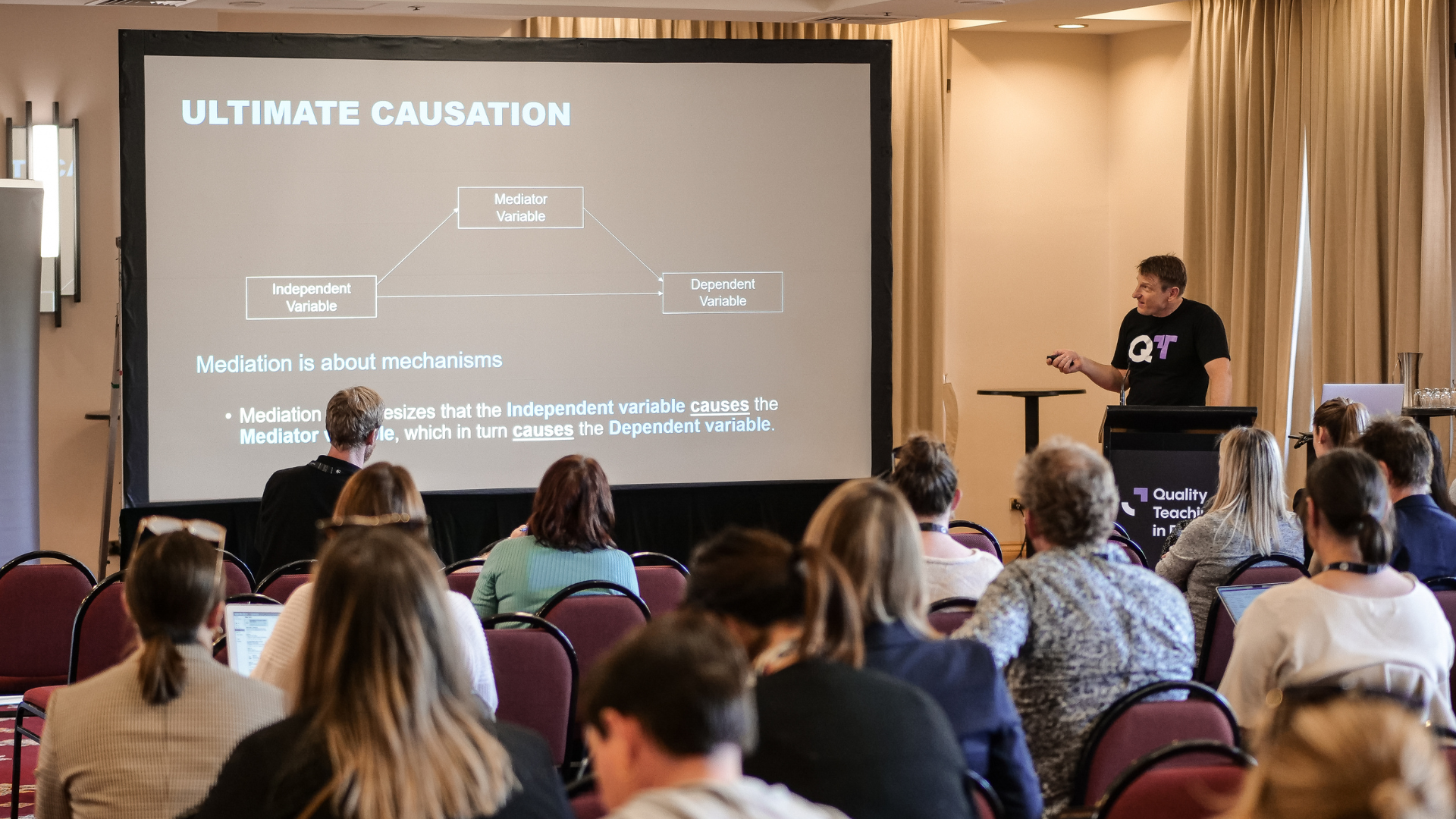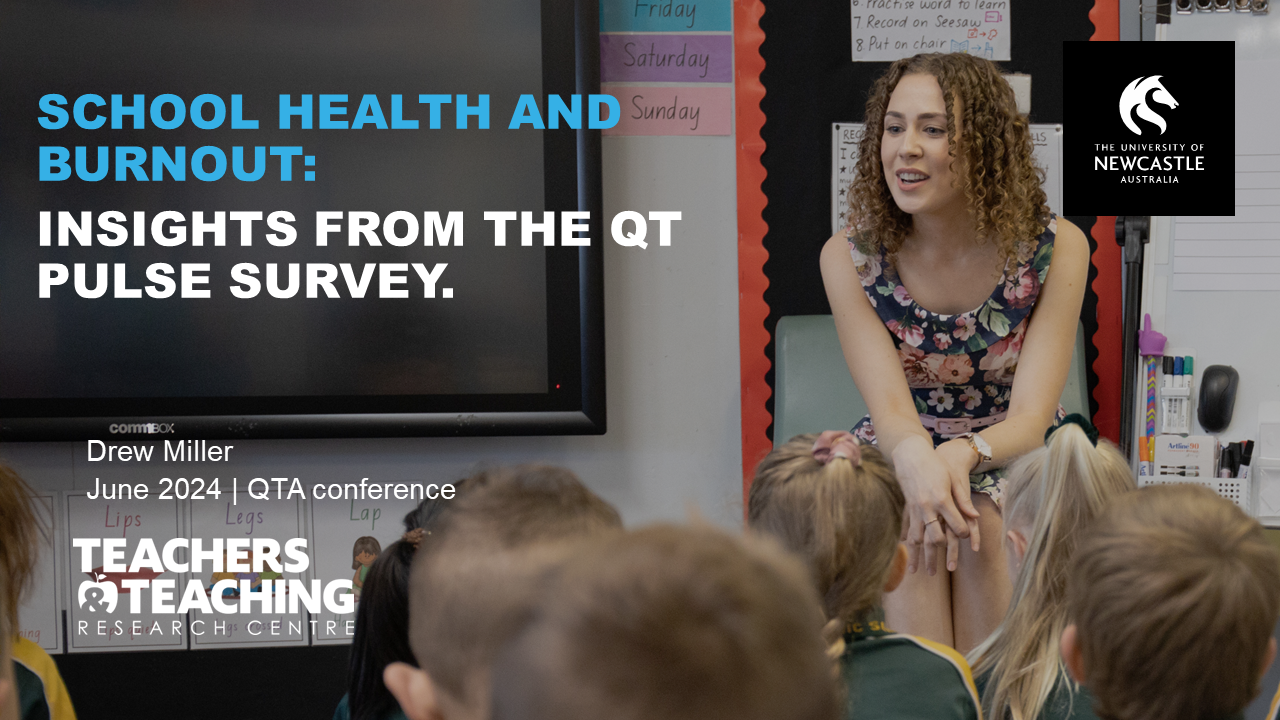During QTiP23, Dr Drew Miller officially launched a free tool for school leaders to gather data about their school culture and environment to help drive data-led improvement – the QT Pulse School Health Longitudinal Survey. At the 2024 QTiP conference, Drew presented some key findings from the first 12 months, drawing on anonymised data from all the schools currently using the QT Pulse Survey.
Drew found the average burnout of teachers and leaders who completed the survey over the past 12 months rated 6 out of 10 and stress was rated 7 out of 10. Meanwhile, morale had a large spread ranging from 2 to 8 out of 10. Drew then presented some correlations:
- Stress and burnout were related: high burnout correlated strongly with high stress
- Morale and burnout were inversely related: low burnout correlated strongly with high morale
While that might seem fairly intuitive, the QT Pulse Survey data showed no relationship between morale and stress. You can have high stress and high morale. Drew’s analysis highlighted the fact that morale is protective of burnout, even when levels of stress are high.
To reduce teacher burnout we either need to reduce stress or improve morale.
Stress is hard to change – a lot of what causes stress are system related issues, such as workload. But morale we can change. Drew presented a five-point plan for leaders to think about building morale successfully:
- Make culture visible. Sign up to the QT Pulse Survey, run the survey and share the results with staff, and find out, do you have a morale problem?
- Work on relational factors. The QT Pulse Survey data showed relational measures such as connectedness, trust, leadership, and school vision correlated strongly with morale.
- Do Quality Teaching Rounds. Research shows QTR improves teacher morale, which makes sense, given the way QTR builds connection and strong relationships between teachers.
- Focus on morale. Trial other systems that focus on morale and measure their impact over time with the QT Pulse Survey.
- Encourage physical activity (particularly together as groups) and work on sleep hygiene. While doing more physical activity doesn’t improve burnout, it does have a strong relationship with sleep quality which is also protective of burnout.
Watch Drew’s presentation below.



